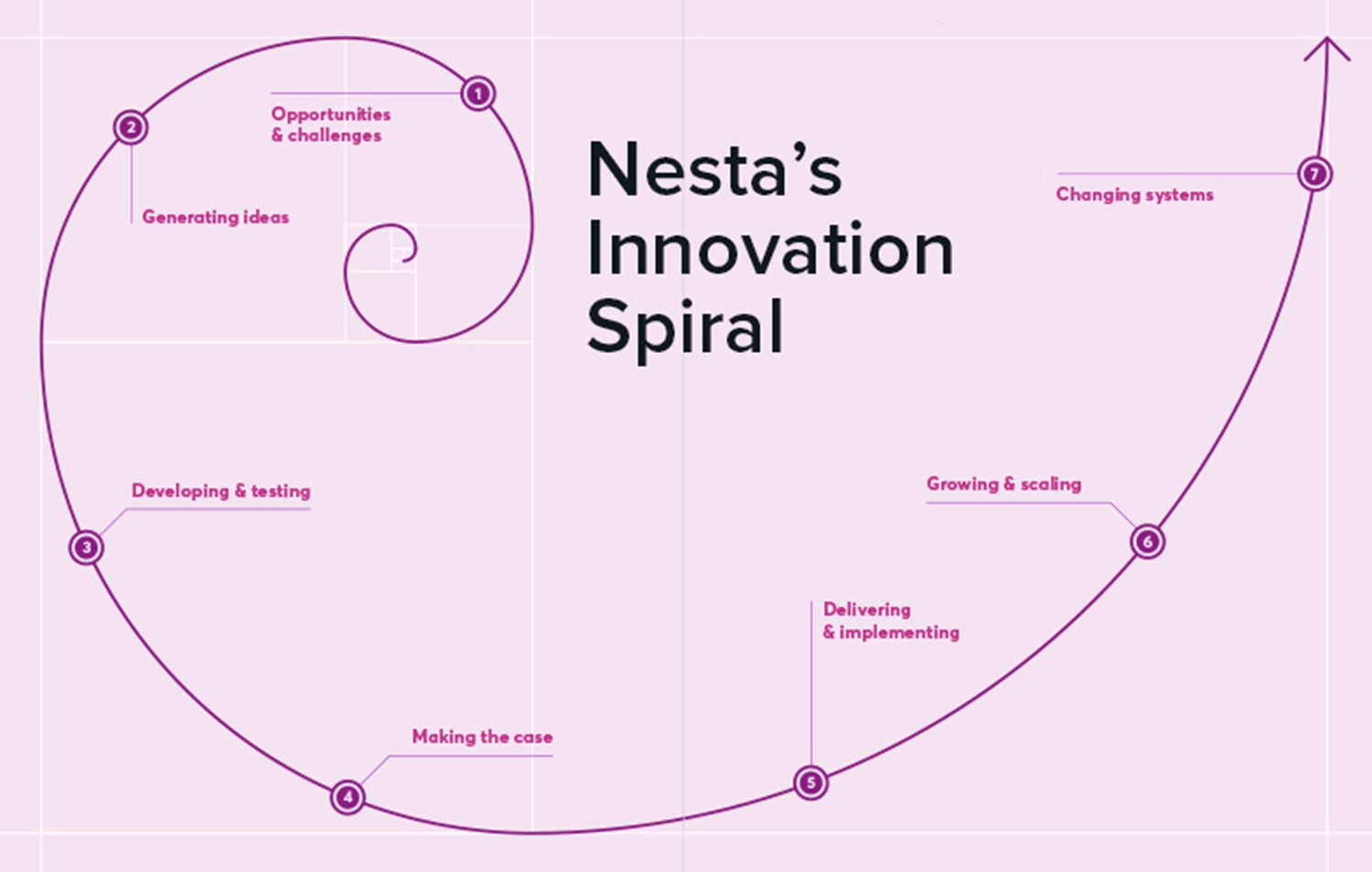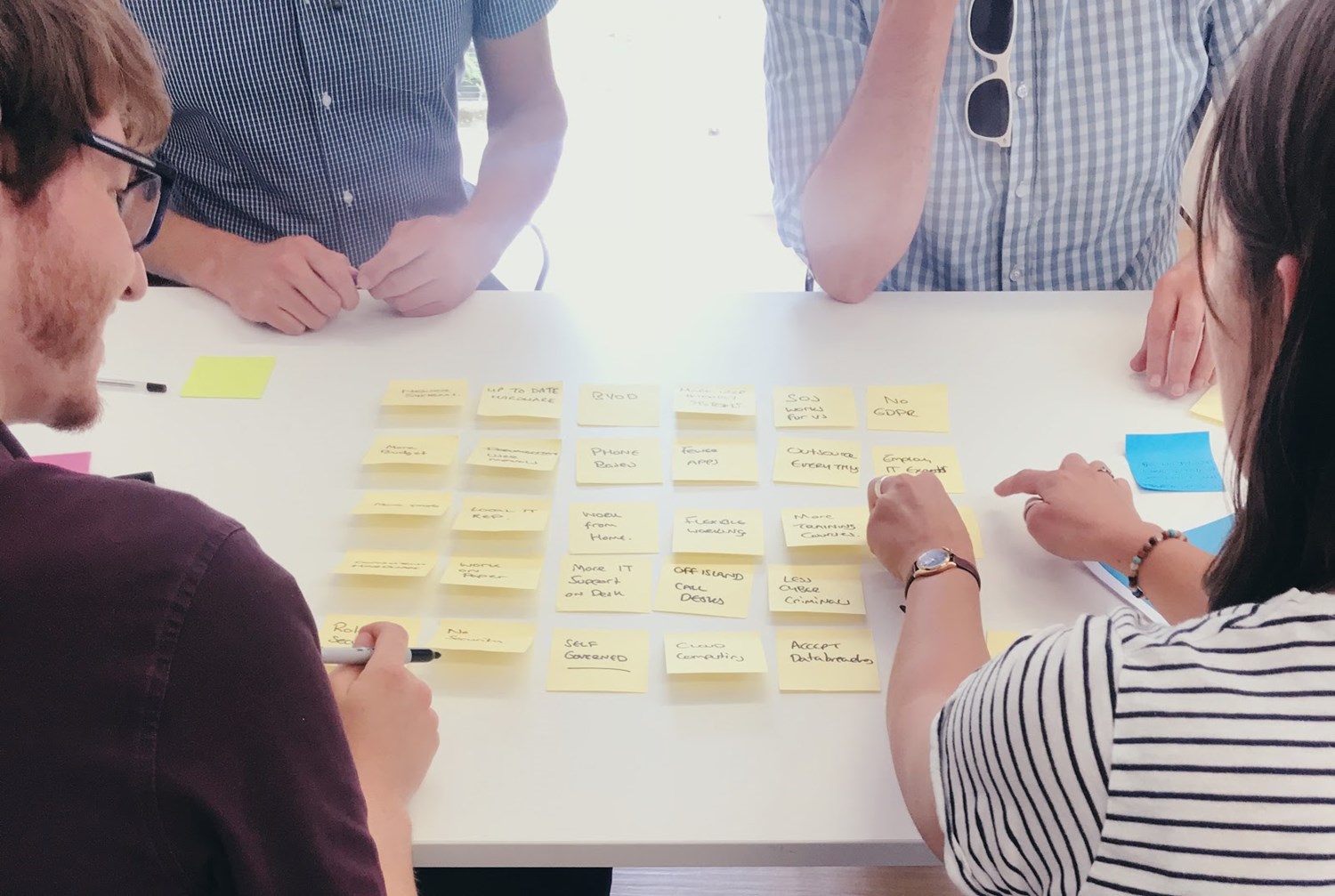Introduction to the Innovation Toolkit 2.0
To understand the Innovation Toolkit, first of all we need to define what we mean by ‘innovation’.
Innovation is not some magical, mystical thing that will just appear out of thin air, rather it is the action of making changes by introducing new methods and ideas that lead to better outcomes. It requires dedicated time to look at things from a different perspective and ask questions such as “How can this be done differently?”, or “How can we improve this process?”.
So you’ve made time for innovation and your asking probing questions, but where does that get you? The toolkit is designed as a guide to assist you on the journey to discovering innovative solutions to your problems. It has advice and information to consider at various stages of a project’s life cycle, as well as practical activities and worksheets to try. Although, there is no single right way to develop innovation and while this toolkit offers some practical methods and techniques to use, every project will have its own unique path.
Project life-cycles
The life-cycle of your project can be complex but there are certain structured stages that an innovation project should pass through as highlighted on the diagrams above. Don’t get stuck in the discovery stage, as Nesta’s spiral shows that is just the beginning, it is important to generate ideas then move on to develop and test. You can always return to discovery if your idea fails at this stage but try it first.

A Compendium of Innovation Methods by Nesta, published in March 2019.
Hints & tips
-
Don’t jump to one solution
-
Have fun!
-
Don’t be afraid to fail
-
Nothing is too big or too small
-
Make time for thinking
-
Focus on the user/target audience
-
Stop, look & listen
-
Ask questions
-
Don’t do it alone
To highlight a few:
Have fun! - Some of the activities in the toolkit might seem trivial or whimsical, not considered productive ‘real work’, but they are designed to be fun because when we are enjoying ourselves we are more likely to apply our creative thinking needed to come up with new ideas.
Nothing is too big or too small - Even the smallest of changes can make a big difference. When prioritising ideas to develop and test consider which ones will take the least effort compared with the most impact. The knock-on effect of changing one small thing could make significant progress towards solving the overall problem. On the other end of the scale if an idea is really big, look at how it can be broken down into manageable pieces and worked through methodically.
Don’t do it alone - Teamwork is key, having a good project team who are prepared for the journey ahead is really important.
Find out more details about the other hints and tips in the Innovation Toolkit 2.0, click here to request your copy.
Team talk
While you might not be able to pick your project team (due to staffing constraints, time scales and other parameters), it is important to make sure that you are all prepared for the journey ahead and make sure everyone is on board. Innovation can be challenging, risky and sometimes controversial so ensuring that your team understands what is involved is crucial to your success.

What makes an innovative team?
99 Problems...
But you can only pick one!
A problem can be seen as a piñata, and this toolkit is a creative and rewarding way of getting to the positive outcomes or ‘goodies’. Often we avoid problems, it’s human nature. We see problems as hornet's nests that we wouldn't want to breathe on, let alone poke. But innovation is a way that we can explore, prod, expose and open up problems to better understand and develop solutions for them.

Break open the problem like a piñata!
There are few ways of choosing a problem to work with and once you have settled on a topic the trick is to explore it fully before trying to solve it. Using activities such as the Roots & Branches exercise to unpick the details of the problem, both its effects (visible branches) and its causes (hidden roots), can help you understand which areas might need more exploration or what to focus on first.
Root & Branches Tip: Try asking ‘the 5 whys’ - Once you’ve come up with your first root cause, ask your team why this might be happening… Have you got an answer? Yes, then ask why again. Continue this process as far as you can, building up a thread of root causes that all contribute to your chosen problem. These details can give you the necessary insight needed to develop innovative solutions.
Time to review
After each activity or stage of your innovation project make sure you allocate time to review the information and reflect on it. Has the focus of the project shifted? Have you got more questions to explore? At this stage, it is good to try and validate the insights your team has discovered so far. If you can identify groups or types of individuals that are directly related to the root causes talking to them is your next step.
Ask questions
It is very important to talk to people (customers, service users, stakeholders, etc.) to establish if they agree with your findings. What do they think the problem is? Where is it impacting them the most and what would they like to see changed? A couple of techniques that are recommended in the toolkit include interviewing, mapping their experience and persona creation.
Ideation
Only once you have explored and validated the problem can you move onto generating ideas. Quite possibly during this process, you have had to adjust your focus or reconsider your outlook on the original problem, so you can see that if you had tried coming up with ideas at the beginning of the project the solution might not have had the desired effect.
The innovation toolkit features two of our favourite quick idea generation techniques (there are lots out there) and the key is to get creative, try drawing your ideas, build on other people’s suggestions, use props, set a timer to add a sense of challenge and excitement. Don’t be afraid to write everything down, even the most obvious ones, they might get discarded straight away but it is important to get them out of your head so that you have space for more creative ideas.
Once your team has come up with a variety of ideas take some time to run through them - Are there any key themes emerging? Can you elaborate on the popular ideas? Start to prioritise them and establish which ones are worth developing further. But make sure to record all of your ideas somewhere safe as you never know when you might need to return to them.

Idea generation from one of the Innovation Lab workshops.
Join us next time to continue the journey through the Innovation Toolkit in part 2 - developing solutions, testing and pivoting, and delivery and implementation.
Want to help drive innovation?
If you want to get involved, here are some ideas to get you started:
-
Schedule a team meeting to discuss innovation and share your learnings.
-
Send us a case study that demonstrates your team’s use of the toolkit.
-
Tell us if you disagree with any of our steps or have your own recommendations, we always want to hear your feedback.
-
Come along to one of our Innovation Lab events - bring a friend or colleague with you, the more the merrier!
Thanks for your time!
